A Teacher’s Heart and Foundational Data

Please allow me to write honestly and drop it like it’s hot for a moment. To put it bluntly, I am afraid. You see, I have a recurring nightmare that often leaves me drenched in sweat with sky-rocketing blood pressure and my nerves shot. This dream, made unpleasant by a persistent sound of the mouse click, usually catapults me to an upright position in bed, only to stare into the darkness and whisper to myself, “Thank, goodness. It was just a dream.”
Or was it?
Let’s face it. Obtaining educational data today is a simple click away. If I seek professional improvement in the area of my weakest teaching areas as they apply to the American Literature End-of-Course Tests, I study the online data of my students’ test scores. If I am curious about the weakest standards on a recent Socrative quiz in AP Language, I download the results via an e-mailed Excel spreadsheet and look for any columns of red. If I want my students to take full advantage of their peers’ assessments of their timed essays, I develop an elaborate and highly successful lesson plan that integrates Google forms and an ensuing self-prescribed project to patch up any standards-based holes.
What is the prevalent sound of these professional practices? A click of the mouse in search of data.
I would be absolutely lying if I said I didn’t want my students to succeed on their standards based assessments. In fact, I want them to excel. I want them to completely demonstrate mastery of all standards in every domain measureable. There is not one lesson plan or learning activity that takes place in our collaborative classroom, Studio 113, that isn’t standards-based. Therefore, I use data.
So what is my fear? What is my recurring nightmare?
I fear the incessant mouse clicks to ascertain my latest teaching evaluation, to upload professional documentation, to peruse my students’ latest scores, and to retrieve the multitude of data needed for today’s educators might ultimately “data-ize” the students and mute the most important source of educational feedback I have come to know in all my fourteen years in a Language Arts classroom…my teacher’s heart.
Growing and Strengthening a Teacher’s Heart
Just like any other muscle, my teacher’s heart needs a consistent workout to stay strong. In order to keep it the foundational source of my educational data, I will continue to implement the teaching practices mentioned below:
For fourteen years, my classes have always begun the first week of school by participating in what I call “Training Camp.” Based in part on Harry Wong’s The First Days of School and born out of an ill-prepared student teaching experience, this four-to-five day lesson plan takes students through all required information. By merging literature, syllabus notes, and classroom procedures with immediate practice of the management system, students learn every aspect of our class. These procedures include transitioning into teams, contributing responsibly to the classroom learning environment, adhering to the BYOD policy, speaking respectfully during whole-class discussions, and, of course, maintaining an efficient noise level by asking students to become quiet in five seconds with a raised right hand. Assuredly, nothing is perfect, but the system runs well enough to establish a foundation that echoes our own hearts.
To gain a general understanding of the students and to bolster the process of developing positive teacher-pupil relationships, I will continue to implement an informational survey during the first week of school. This information ranges from students’ personal interests, talents, weaknesses, technology prowess, and wishes for our Studio 113 learning family. Click here to see the survey we used at the beginning of this year.
No students wish for a completely sedentary classroom. Ever since my first year in the late nineties, students and I have been developing interactive learning structures that engage students by asking them to bring literature to life. Thanks to a newly designed classroom, we now are able to make thinking and reading visible by improvisationally acting and presenting on a six-sided stage in the middle of our class. Some of our structures may be as off-the-wall as our original Wax Museum, whereas others like the Voting Chips structure are gamifying approaches intended to make traditional multiple choice questions a bit more exciting and involved. Over the years, we have created about forty authentic learning models. These structures mix random accountability, whole class cooperation and collaboration, and a lot of learning excitement with the assigned standards. Click here to experience the structures yourself at ISTE ’13.
One of my favorite ways to stay close to my teaching heart’s data is to implement Project/Passion/Problem-Based Learning contracts. Although this is something the students and I have been developing for many years, the overall plan came together beautifully this year with our first PBL contract. It is as simple as this: I print out a contract that stipulates the required standards and level of mastery expected, and the students propose their modes of demonstrating mastery. After an agreement is reached by all parties, the contract is signed and the learning begins. Click here to see the finer details of our PBL contracts and here to view some of the students’ presentations.
By joining learning communities in other schools from our own district and other states through tech tools like Twitter and Skype, the classroom walls are beginning to flatten and students are able to reach out and extend education past their comfort zones. Take a peek at one of our successful lesson plans that leveraged the power of tech tools to bring four schools from three different states together at the same time outside of class.
Although I respect many conflicting views on the subject of smartphones in the class, I continue to practice forward thinking skills and seek ways to implement the powerful handheld laptops, which I now refer to as “palmtops.” Want to see how we use BYOD to advance our lesson plans and engage our students with creativity and connectivity? Click here for Part 1 and here for Part 2.
Perhaps the best way to clearly hear my teacher’s heart and the data it is communicating is to listen to my students. How do they learn? What would make them jump out of bed to come to school? What am I doing poorly as a teacher? The power of a Google Form gives me all the feedback I need. Here’s an example survey we used on the first day after Christmas break.
One of my good friends, Greg O’Dell, finally persuaded me at ISTE ’11 in Philadelphia to give Twitter a try. I kept telling him I was way too busy with grading essays on Sundays to tweet about something no one wanted to hear anyway. Boy, was I way off. Out of respect for my friend and due to the overwhelming evidence presented to me, I gave it a try. Two years later, I feel like I have learned as much as a doctoral candidate. By joining a professional learning network of undeniably passionate educators from around the world, a little professional assistance is just a message away. Virtually, I teach on an infinite hall of amazing teachers and each one is right next door.
In a nutshell, writing is a blessing to me. Writing is living. I am increasingly thankful to GettingSmart.com for allowing me to share my classroom practices and ideas. By sharing my struggles and successes in this amazing profession, I have turned myself transparent. This is the only way I can improve, seek better practices, and connect with authentic forward thinkers who are blazing the trail of education today.
In closing and in keeping with my honesty, I must admit there is another dream that occurs much more than the aforementioned nightmare. In this dream, I find myself in my preferred environment.
And…
I’m listening to students during a thought-provoking discussion. I’m mesmerized by a team’s originally written and recorded song. I’m witnessing a “lightbulb” moment from the quiet kid in the corner. I’m hearing a collective “Awwwww” from a disappointed class as the bell rings. I’m reading an e-mail from a former student of years past and how Studio 113’s approach to education changed his direction. And I’m loving my job as I listen to my students.
Our classroom echoes the sound of my teacher’s heart and the pulse of all those students attached to it.
It’s my foundational data and it will never go offline.
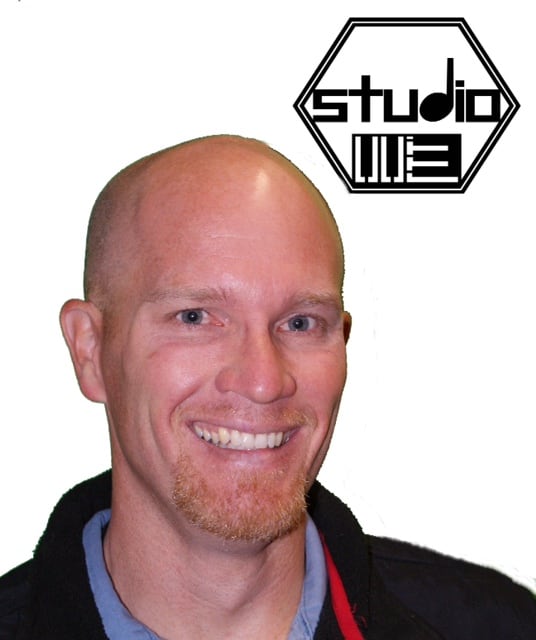



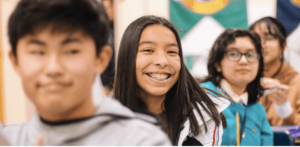
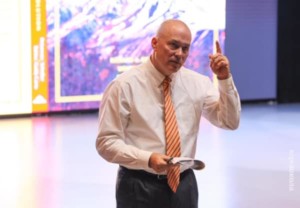
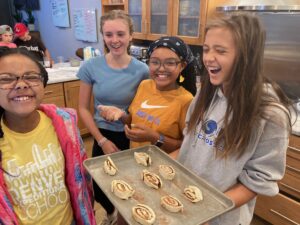
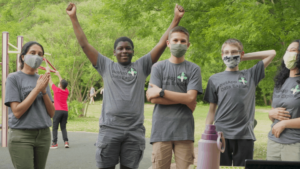
0 Comments
Leave a Comment
Your email address will not be published. All fields are required.